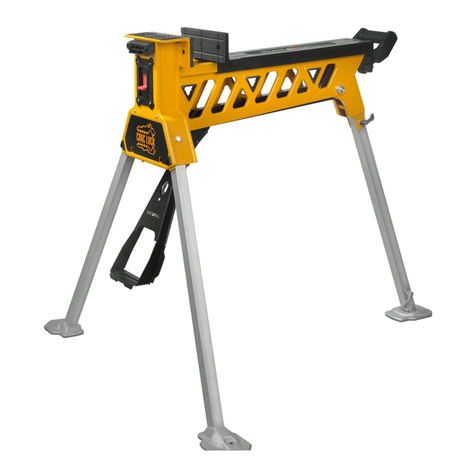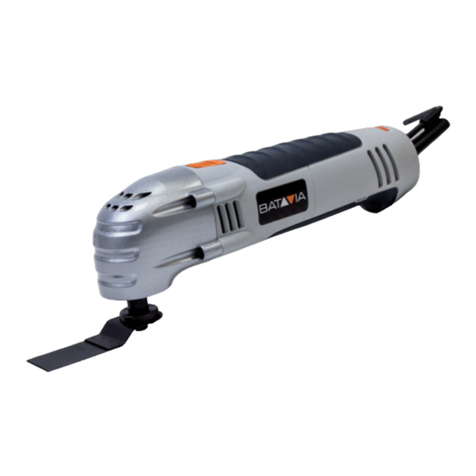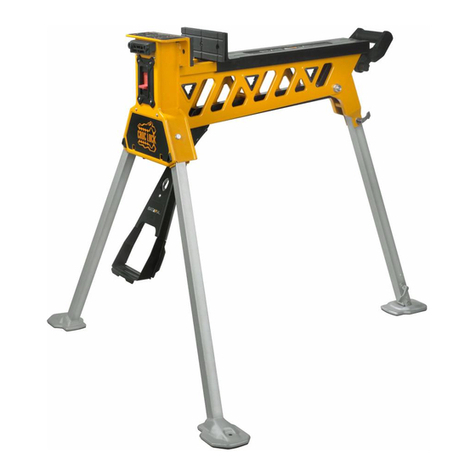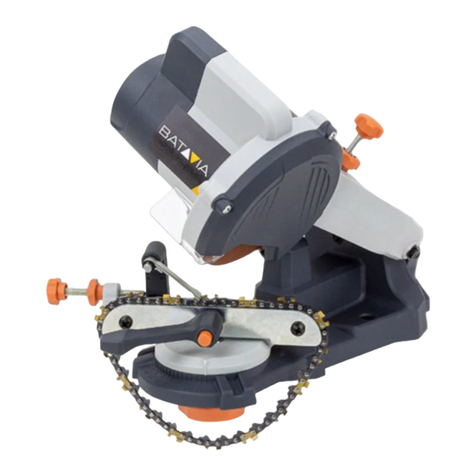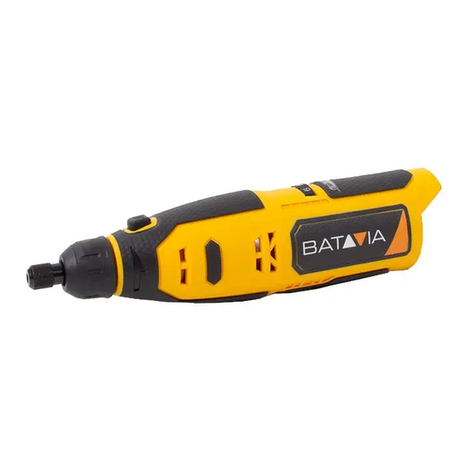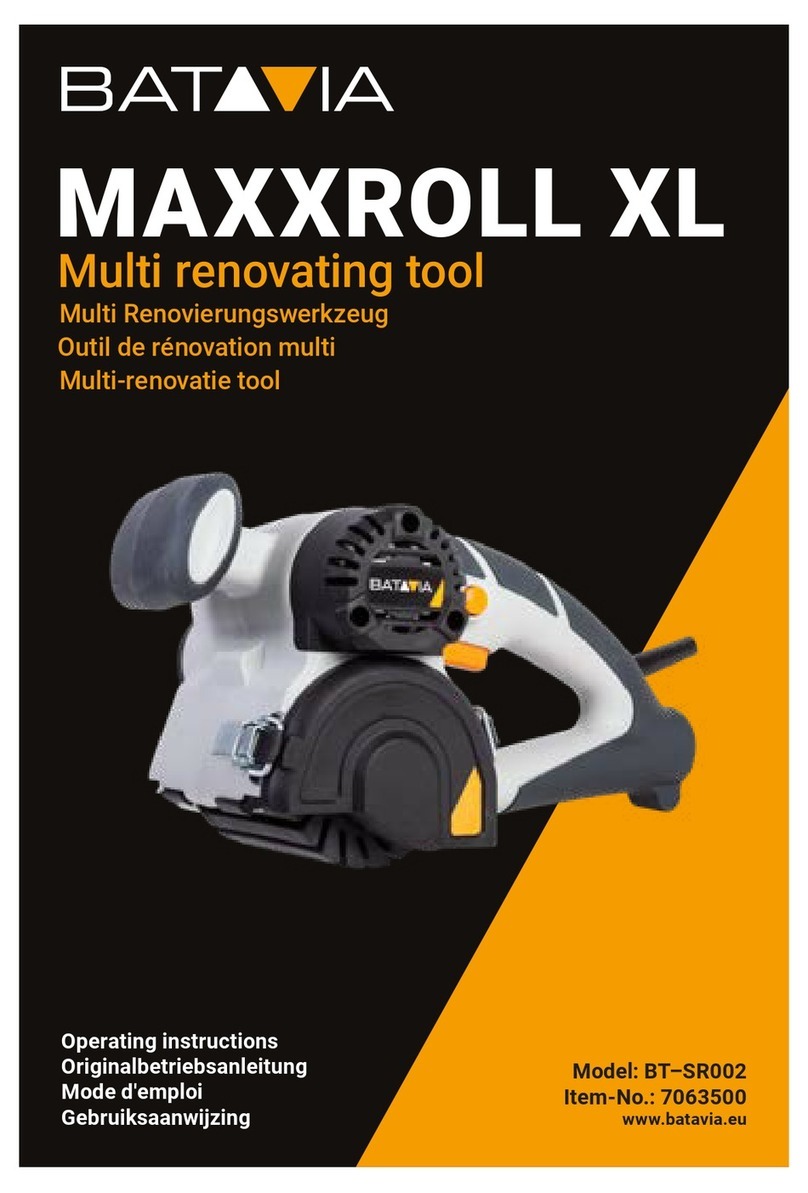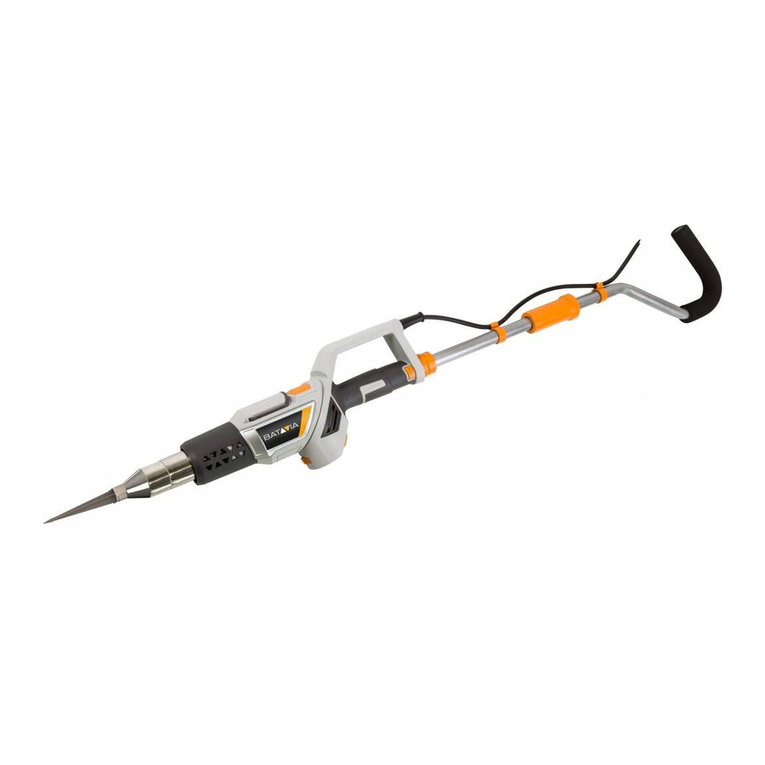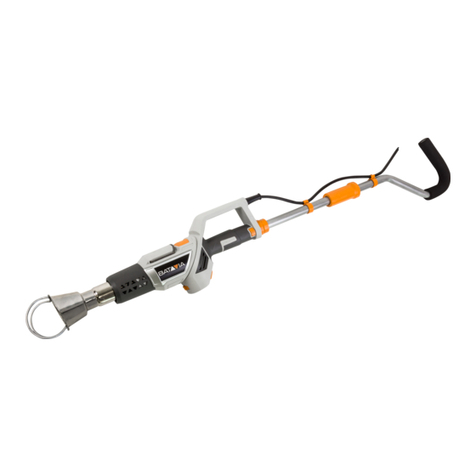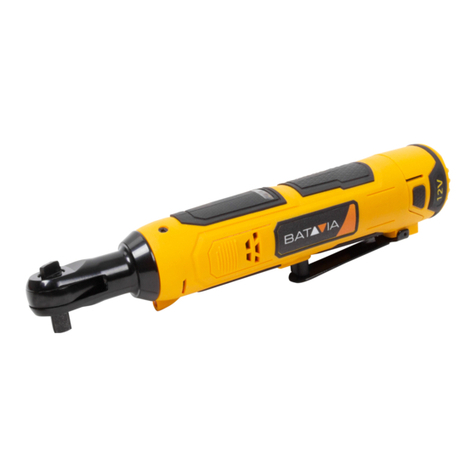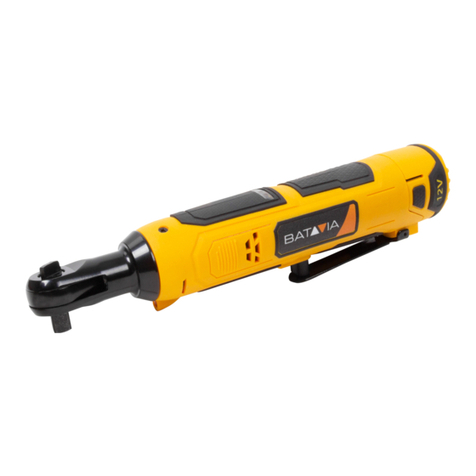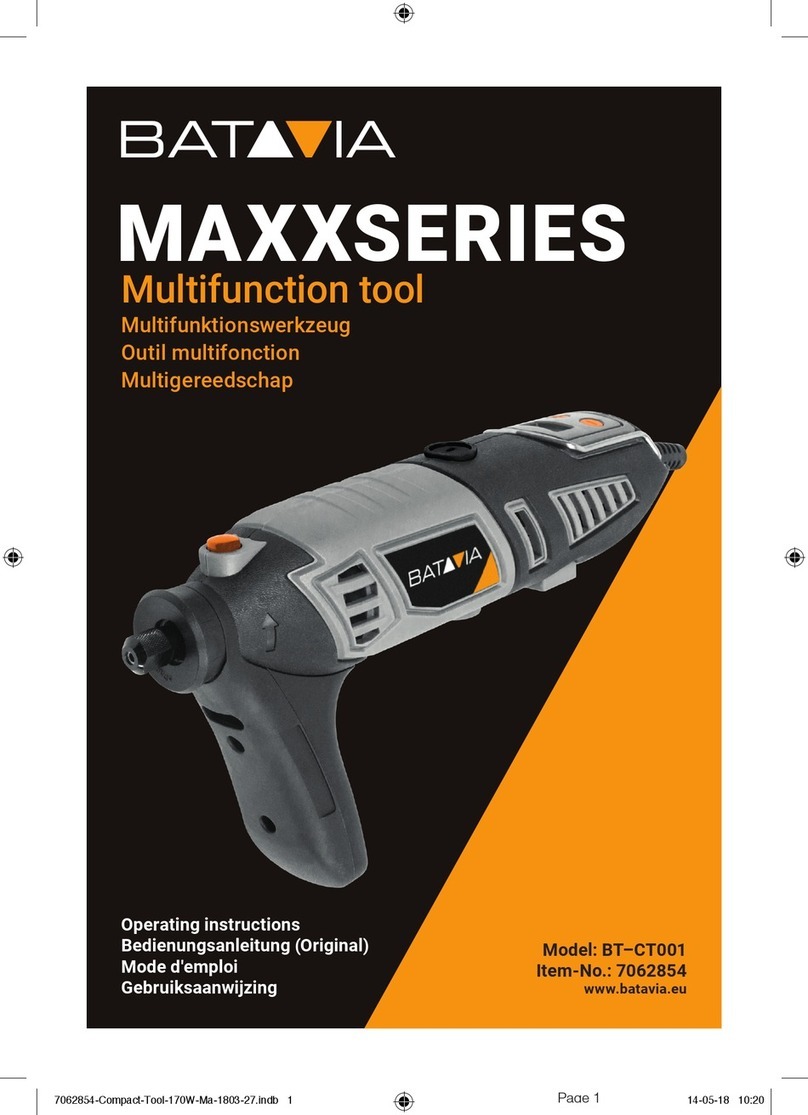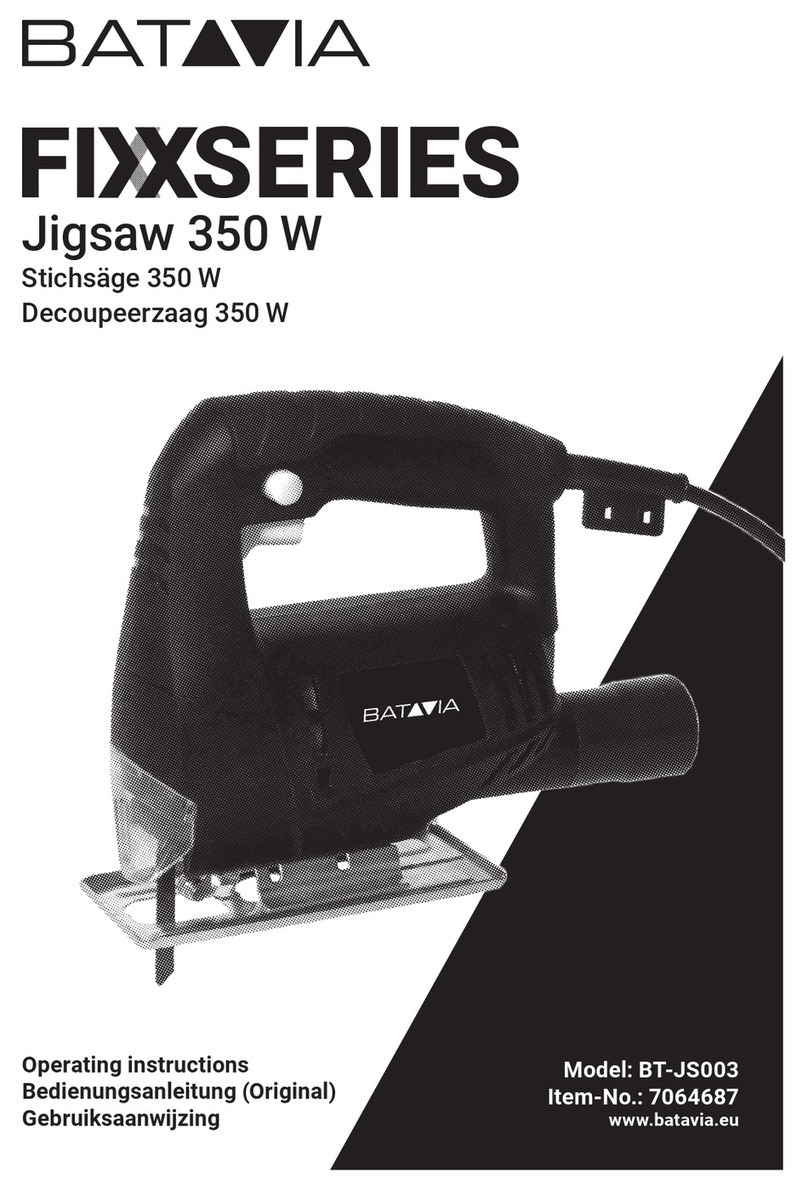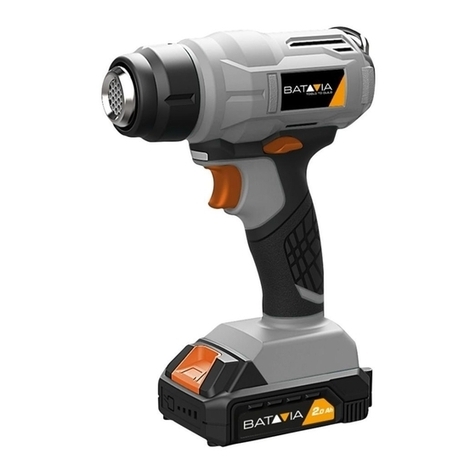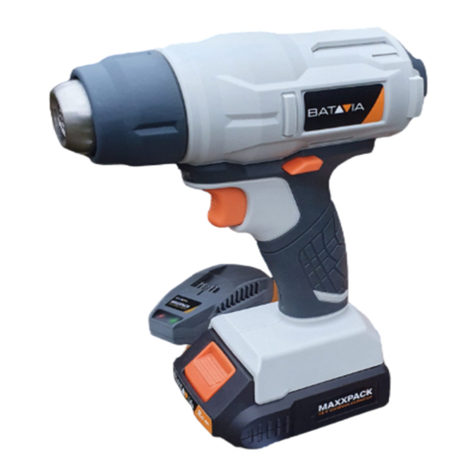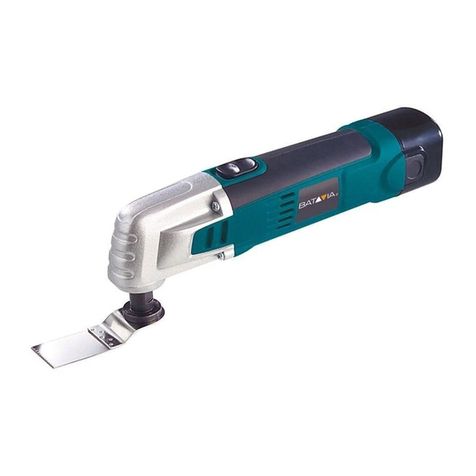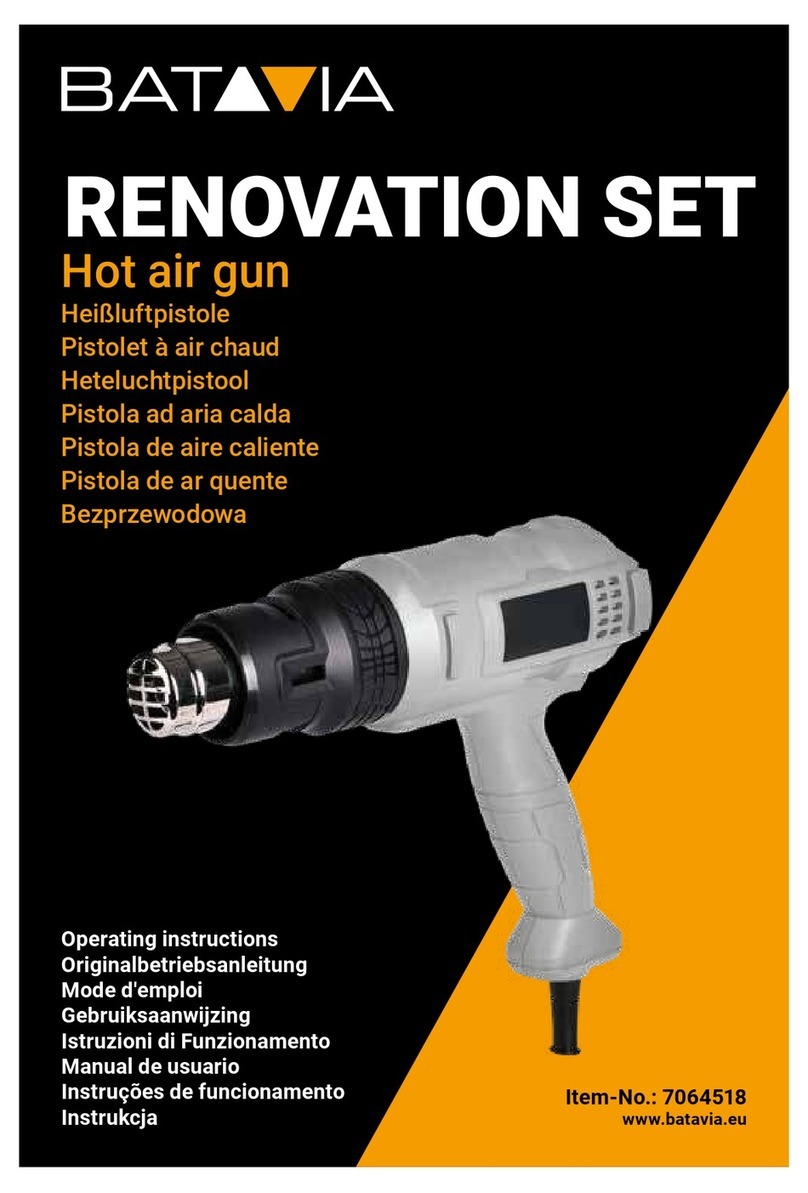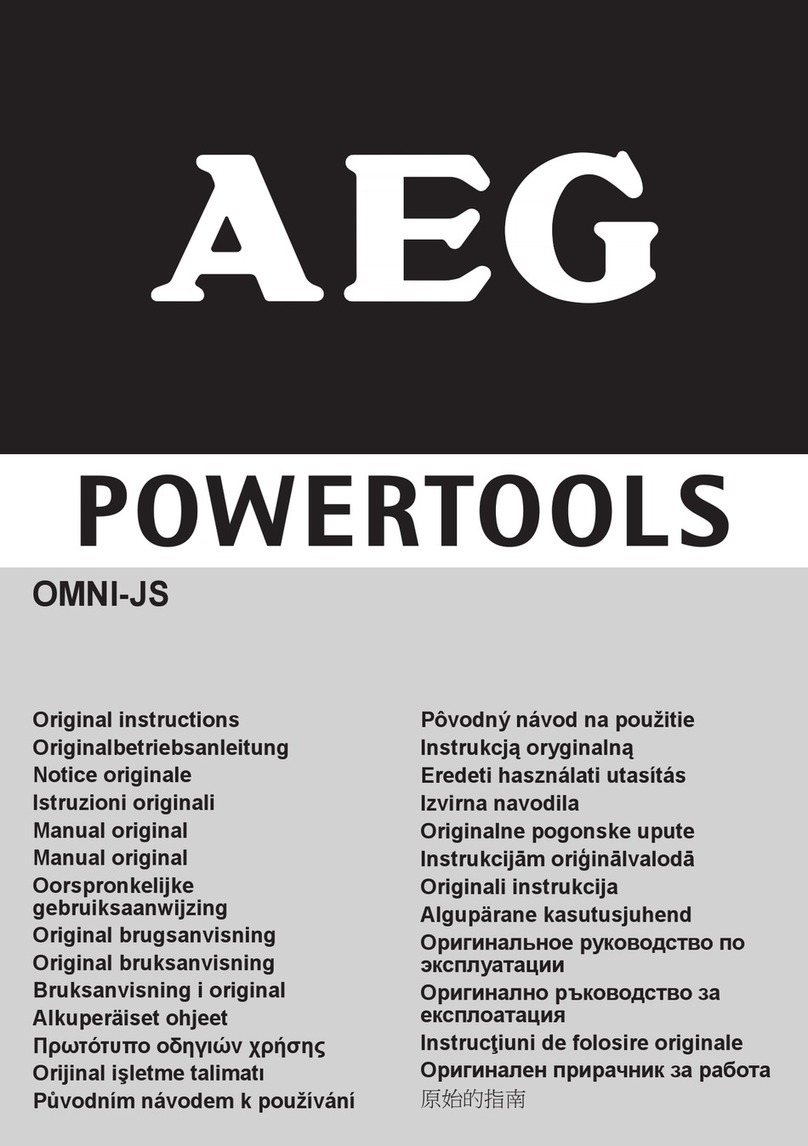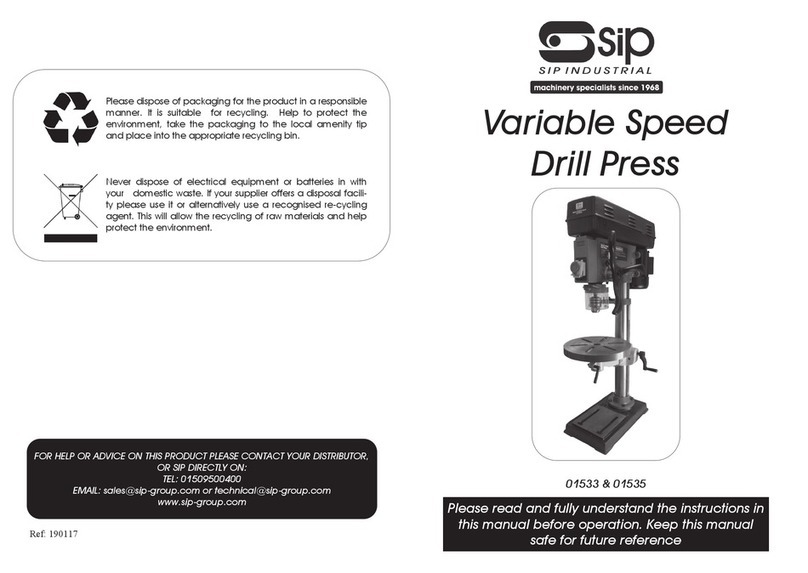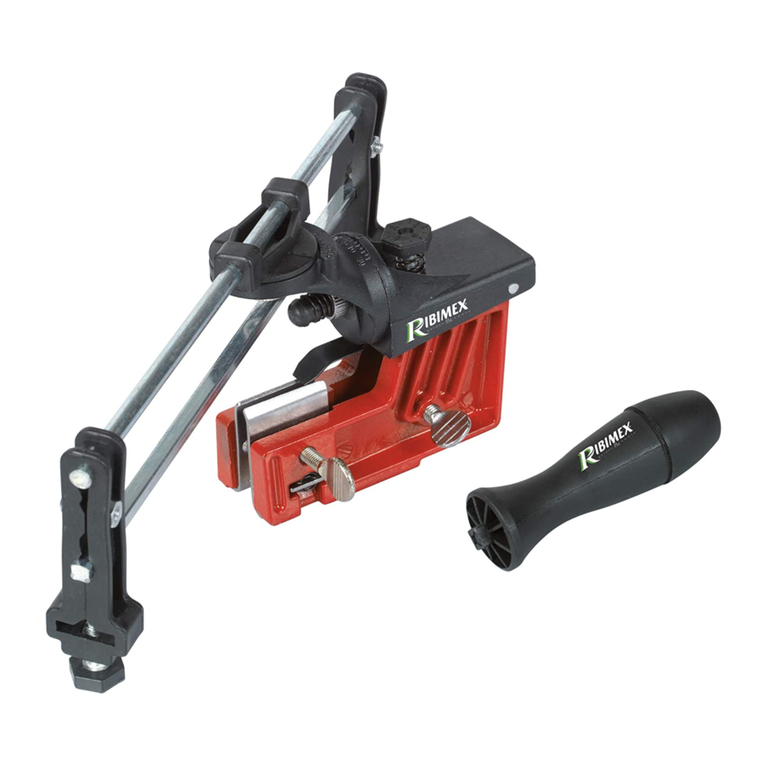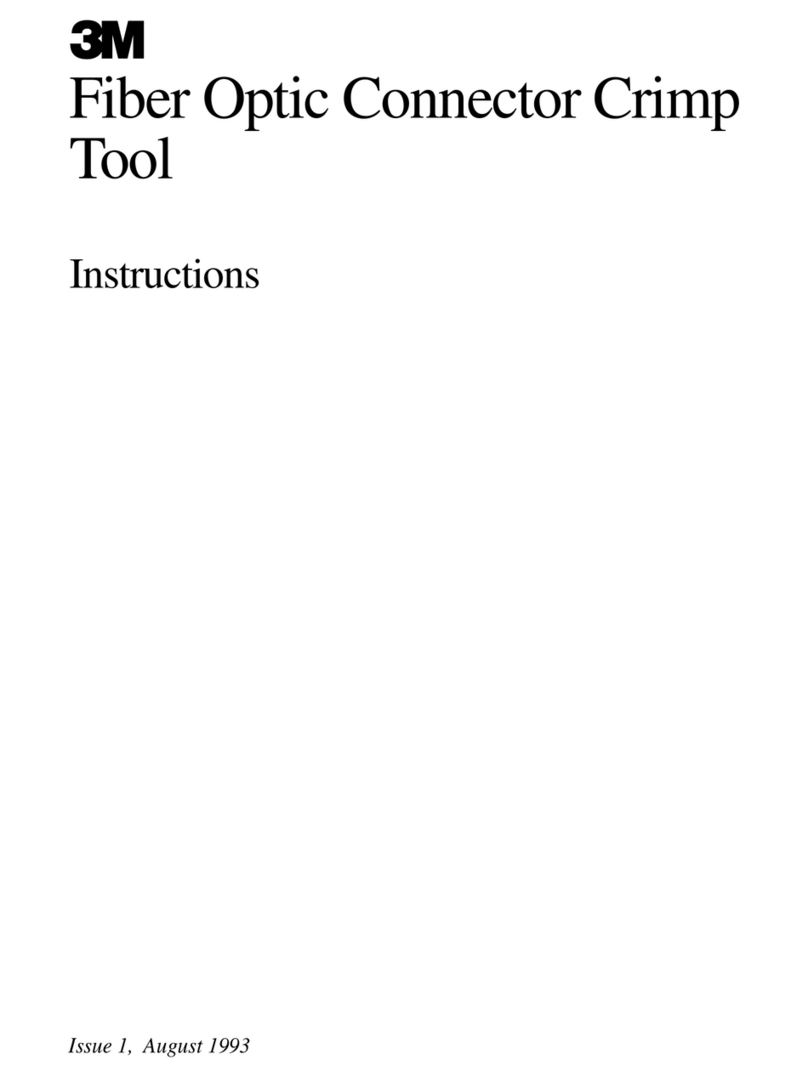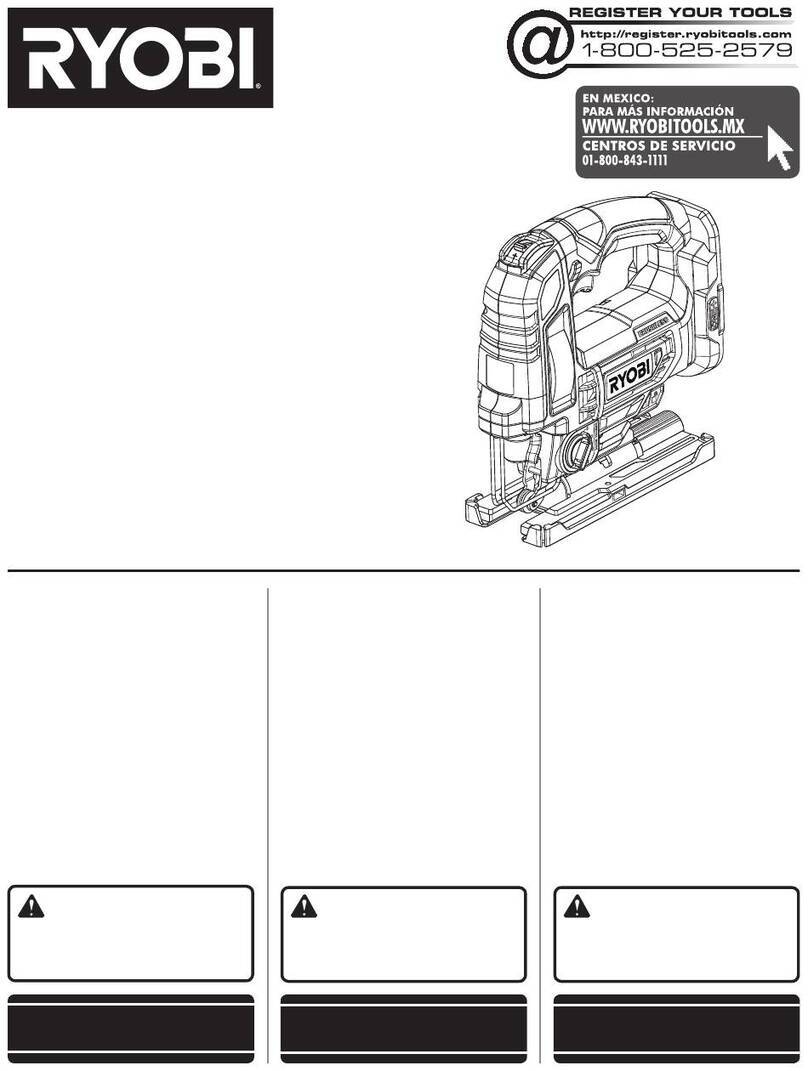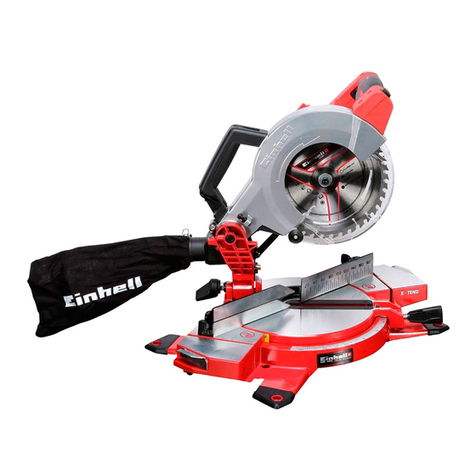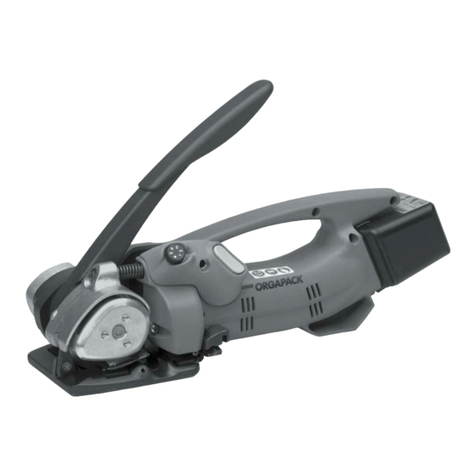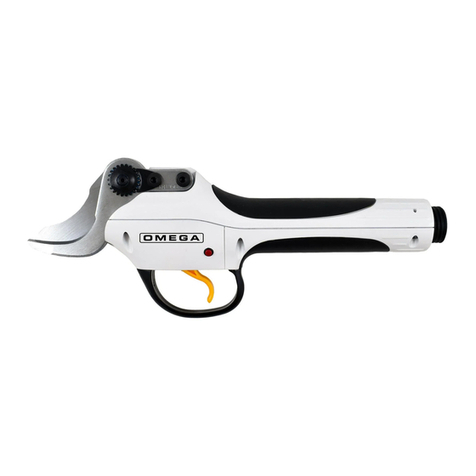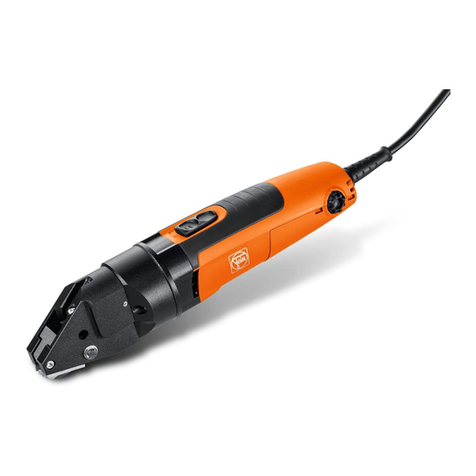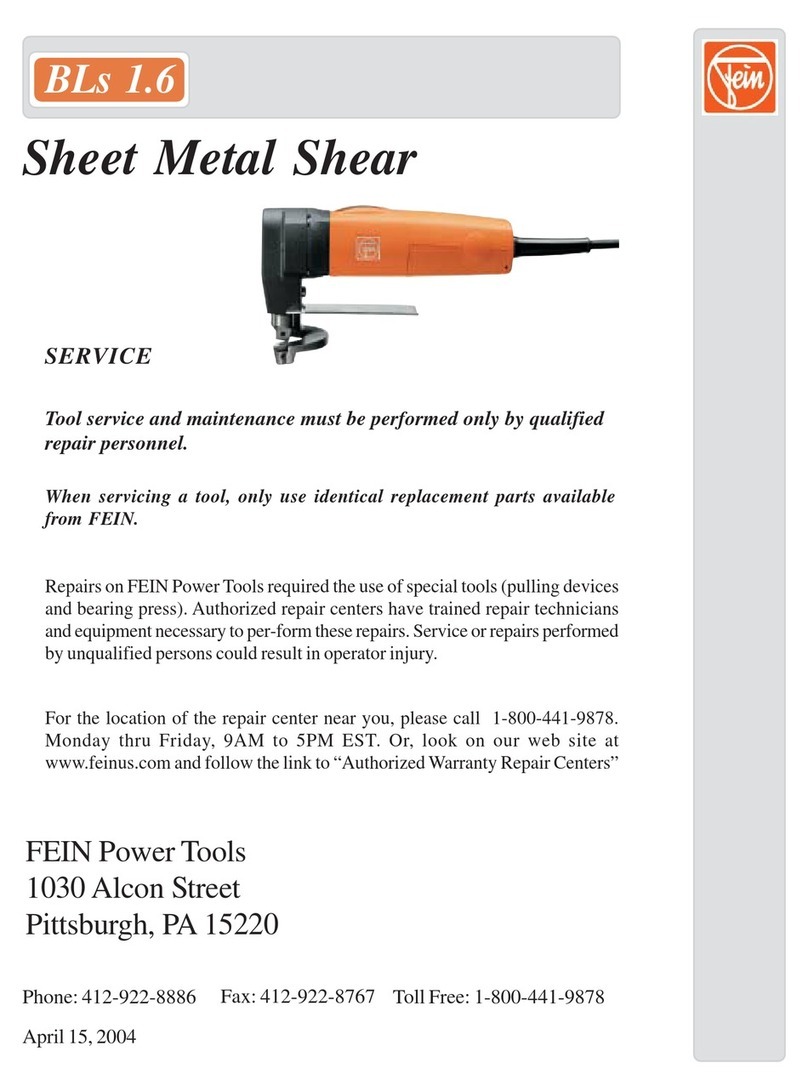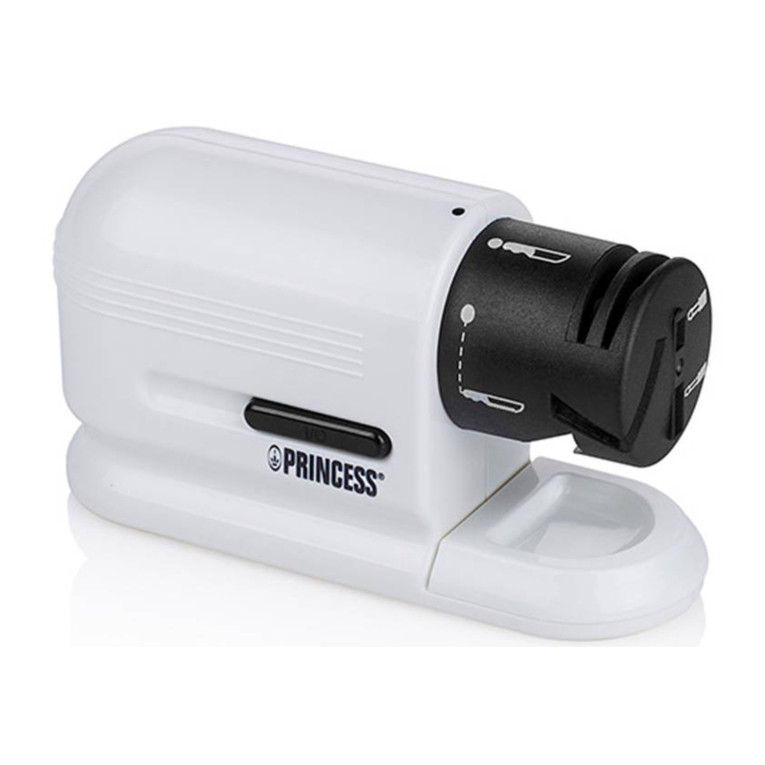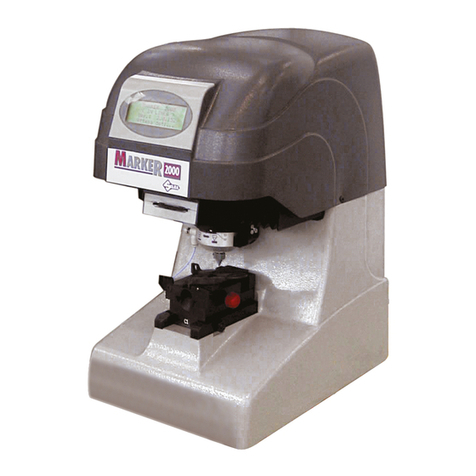
5
English
and control of the tool in unexpected
situations.
2.5 Battery tool use and care
a. Recharge only with the charger speci-
ed by the manufacturer. A charger
that is suitable for one type of battery
pack may create a risk of re when
used with another battery pack.
b. Use power tools only with specically
designated battery packs. Use of any
other battery packs may create a risk of
injury and re.
c. When battery pack is not in use, keep
it away from other metal objects, like
paper clips, coins, keys, nails, screws
or other small metal objects, that can
make a connection from one terminal
to another. Shorting the battery termi-
nals together may cause burns or a re.
d. Under abusive conditions, liquid may
be ejected from the battery; avoid
contact. If contact accidentally
occurs, ush with water. If liquid con-
tacts eyes, additionally seek medical
help. Liquid ejected from the battery
may cause irritation or burns.
e. Do not use a battery pack or tool that
is damaged or modied. Damaged or
modied batteries may exhibit unpre-
dictable behaviour resulting in re,
explosion or risk of injury.
f. Do not expose a battery pack or tool to
re or excessive temperature. Expo-
sure to re or temperature above 130°C
may cause explosion.
g. Follow all charging instructions and
do not charge the battery pack or tool
outside the temperature range speci-
ed in the instructions. Charging
improperly or at temperatures outside
the specied range may damage the
battery and increase the risk of re.
2.6 Service
a. Have your power tool serviced by a
qualied repair person using only
identical replacement parts. This will
ensure that the safety of the power tool
is maintained.
b. Never service damaged battery packs.
Service of battery packs should only be
performed by the manufacturer or
authorized service providers.
3. Safety instructions for cordless
drill/drivers
3.1 General
• The tool/charger is not intended for use
by persons (including children) with
reduced physical, sensory or mental
capabilities, or lack of experience and
knowledge, unless they have been given
supervision or instruction concerning
use of the tool/charger by a person
responsible for their safety.
• Ensure that children do not play with the
tool/charger.
• Ensure that the Forward/Reverse
switch (6) is in the middle (locking)
position before making any adjust-
ments or changing accessories as well
as when carrying or storing the tool.
• Do not work materials containing
asbestos (asbestos is considered
carcinogenic).
• Dust from material such as paint con-
taining lead, some wood species, min-
erals and metal may be harmful (con-
tact with or inhalation of the dust may
cause allergic reactions and/or respira-
tory diseases to the operator or
bystanders); wear a dust mask and
work with a dust extraction device
when connectable.
• Certain kinds of dust are classied as
carcinogenic (such as oak and beech
dust) especially in conjunction with
additives for wood conditioning; wear a
dust mask and work with a dust extrac-
tion device when connectable.
• Follow the dust-related national require-
ments for the materials you want to
work with.
• When using the drill, use safety equip-
ment including safety glasses or shield,
ear defenders, and protective clothing
including safety gloves. Wear respira-
tory protection suitable for the work
being undertaken. A minimum rating of
FFP2 is recommended. If operating the
tool causes discomfort in any way, stop
